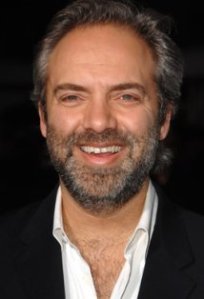When following debates among James Bond fans — whether on Internet bulletin boards, Facebook or in person — people sometimes say “try reading Fleming” (or a variation thereof) as if it were a trump card that shows they’re right and the other person is wrong.
Read Fleming. That shows Bond is supposed to be a “blunt instrument.” Therefore, Casino Royale and Quantum of Solace are really true to Fleming.

“Read Fleming!” = “I’m right, you’re wrong!”
Read Fleming. That shows Bond is a romantic hero, not a neurotic antihero, therefore, (INSERT BOND ACTOR HERE) was true to Fleming. Meanwhile, (INSERT BOND ACTOR HERE) meant the 007 film series had reached a nadir.
In reality, over a half-century, the Bond films have passed through multiple eras. To some, Connery can never be surpassed and Moore was a joke. Except, the Connery films have more humor than Fleming employed (on the “banned” Criterion laser disc commentaries, Terence Young chortles about how Fleming asking why the films had more humor than his novels). The Moore films, for all their humor, do have serious moments (Bond admitting to Anya he killed her KGB lover in The Spy Who Loved Me or Bond being hurt but not wanting to admit it after getting out of the centrifuge in Moonraker). Other comments heard frequently: Brosnan tried to split the difference between Connery and Moore, Craig plays the role seriously, the way it should be, etc., etc.
Lots of different opinions, all concerning the same character, dealing with different eras and the contributions of multiple directors and screenwriters. Which reminded of us another character, who’s been around even longer than the film 007: Batman, who made his debut in Detective Comics No. 27 in 1939.
Early Batman stories: definitely dark. “There is a sickening snap as the cossack’s neck breaks under the mighty pressure of the Batman’s foot,” reads a caption in Detective Comics No. 30.
Then, things lightened up after Batman picked up Robin as a sidekick. Eventually, there was Science Fiction Batman in the 1950s (during a period when superhero comics almost disappeared), followed by “New Look” Batman in 1964 (which could also be called Return of the Detective), followed by Campy Batman in 1966 (because of popularity of the Batman television show), followed by Classic Batman is Back, circa 1969 or ’70, etc., etc. All different interpretations of the same character.
In the 1990s, there was a Batman cartoon that captured all this. A group of kids are talking. Two claim to have seen Batman. The first provides a description and we see a sequence resembling Dick Sprang-drawn comics of the 1940s, with Gary Owens providing the voice of Batman. The second describes something much different, and the sequence is drawn to resemble Frank Miller’s The Dark Knight Returns comic of the 1980s, with Michael Ironside voicing Batman.
Eventually, the group of kids gets into trouble and we see the 1990s cartoon Batman, voiced by Kevin Conroy, in a sequence that evokes elements of both visions.
With the Bond film series, something similar has occurred. In various media, you’ll see fans on different sides of an argument claiming Fleming as supporting their view. Search hard enough, and you can find bits of Fleming or Fleming-inspired elements in almost any Bond film. The thing is, the different eras aren’t the result of long-term planning. They’re based on choices, the best guess among filmmakers of what is popular at a given time, what makes a good Bond story, etc.
In effect, both the film 007 and the comic book Batman have had to adapt or die. Fans today can’t imagine a world without either character. But each has had crisis moments. For Bond, the Broccoli-Saltzman separation of the mid-1970s and the 1989-95 hiatus in Bond films raised major questions about 007’s future. Batman, meanwhile, faced the prospect of cancellation by DC Comics (one reason for the 1964 revamp that ended the science fiction era) but managed to avoid it.
None of this, of course, will stop the arguments. Truth be told, things might become dull if the debates ceased. Still things might go over better if participants looked at them as an opportunity. An opposing viewpoint that’s well argued keeps you sharp and might cause you to consider ideas you overlooked.
Filed under: James Bond Books, James Bond Films | Tagged: Batman, Batman TV show, Casino Royale, Daniel Craig, DC Comics, Detective Comics 27, Dick Sprang, Frank Miller, Ian Fleming, James Bond Books, James Bond Films, Kevin Conroy, Michael Ironside, Pierce Brosnan, Quantum of Solace, Roger Moore, Sean Connery, Terence Young, What 007 and Batman have in common | 5 Comments »











